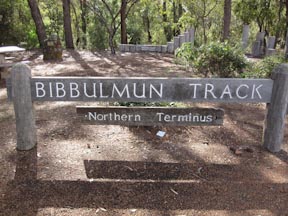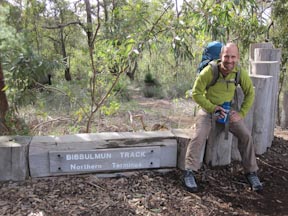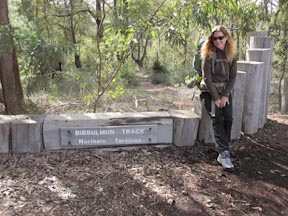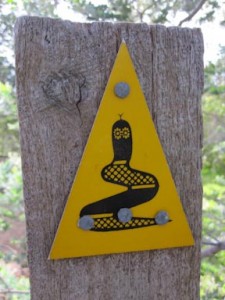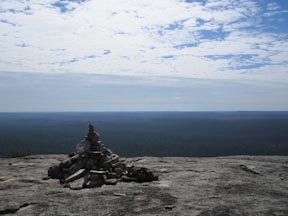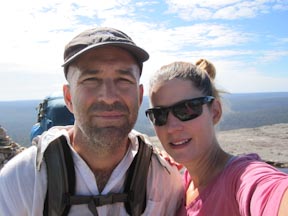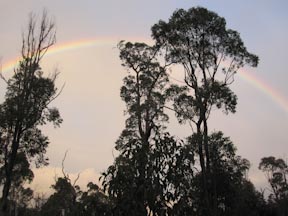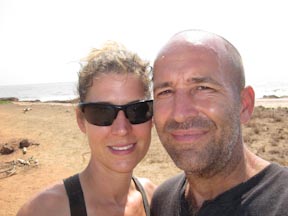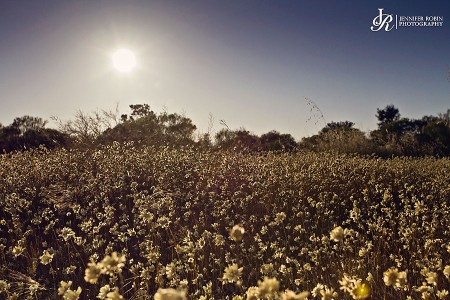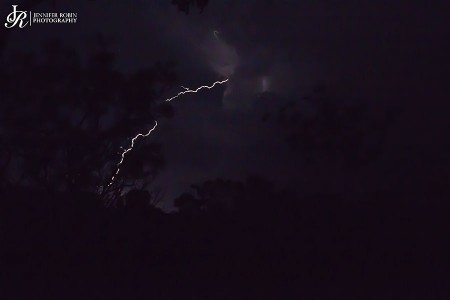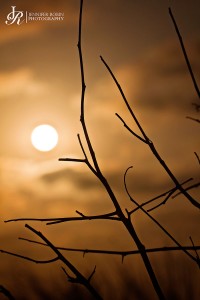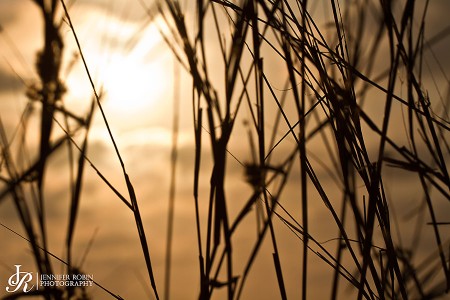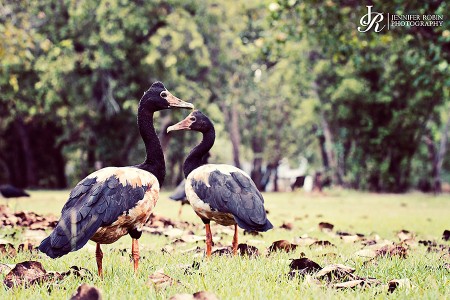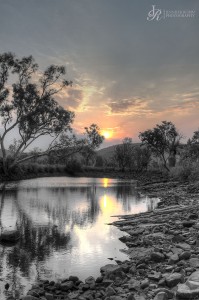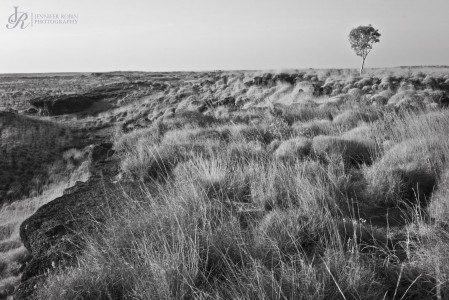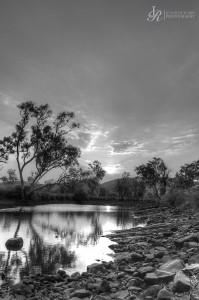From Broome, we headed east and then north, leaving Western Australia and heading to the Kakadu National Park of the Northern Territory.
A day or so east of Broome, the terrain became less monotonous than it had been during the previous section of Western Australia. There was some relief to the terrain, and the trees became more interesting.
There was still a lot of road kill, mostly kangaroos, although we did see a dead horse on the side of the road. Once we got into Kakadu, we stopped seeing roadkill. We also stopped seeing road trains, so that seems to indicate the killer.
The gas continued to be stupidly expensive, like everything else.
The weather got hotter and dryer, reminding me of late spring in the Mojave Desert of California. We frequently saw dust devils, many of which grew sufficiently in size to be proper tornadoes.
Folks do a lot of preemptive underbrush burning around here, and we could usually see smoke from a fire somewhere on the horizon.
Where possible, we camped for the night at free roadside campsites. Where not possible, we stayed at paid campervan parks, with the cost of a powered site running between $30 and $50 a night. At one park, several kilometers down a dirt road south of the town of Wyndham, we spent two nights to clean things and do a lot of nothing.
The hotels and motels we saw along the way looked like lower-range Motel 6’s. So, while staying in a campervan sucks, we figured we were living large by comparison.
Throughout this road trip, we took side roads to check out coastal towns, hoping against hope that we would find something interesting. We continued to be disappointed.
If I had to do this car-camping thing again, I think I would have gotten a four-wheel-drive rig instead of a two-wheel-drive campervan. There is a lot of four-wheel-drive-only road out here, and while it probably is no better than anything else we saw, at least we could have spread our futile efforts over a wider area.
The aboriginal population increased the closer we got to Darwin, with whites being a clear minority in many of the smaller road-junction towns.
Overall, the trip through Australia continued to underwhelm us; except in the monetary cost area, which continued to floor us.
During this part of the trip, Jen was re-reading Hitchhiker’s Guide to the Galaxy. Much of it seemed to describe our experience on the Australian road trip. Here are some sample quotes from the book…
“…and the surface of the planet appeared bleak and forbidding in the common light of day – gray, dusty, and only dimly contoured. It looked dead and cold as a crypt. From time to time promising features would appear on the distant horizon – ravines, maybe mountains, maybe even cities – but as they approached the lines would soften and blur into anonymity and nothing would transpire.”
“Bits of it were dullish gray, bits of it dullish brown, the rest of it rather less interesting to look at. It was like a dried-out marsh, now barren of all vegetation and covered with a layer of dust about an inch thick.”
“‘Desolate hole, if you ask me,’ said Ford. ‘I could have more fun in a cat litter.'”
Ford captured my thoughts completely.
By now, we had had enough of Australia, and wanted to leave. To that end, we completed our escape plan, which had us heading back to Battambang, Cambodia for a month, where Jen could rehabilitate her injury in luxury for pennies a day. One thing that came of Australia was a renewed appreciation for Southeast Asia.
We forfeited a few hundred dollars on an early turn-in of the campervan to leave when we did, but it was money well lost.
Besides, we had to get out of Australia to get anything approaching modern communications. It’s interesting to us that a Third World country like Cambodia, only recently emerged from complete destruction, is kicking Australia’s ass in the information technology arena.
To make our Australia Escape Plan, we had to travel to Darwin to use the free Internet access in the Northern Territory Library, located in the State’s Parliament Building. It was crowded with young Australians using what may be the only free and reliable web access around. Meanwhile, Cambodian rice farmers are surfing the web on 3G smart phones, while Laotian teenagers text each other from mopeds.
Kakadu National Park
We spent four nights camping in the Kakadu National Park, which is located southeast of Darwin.
There are several streams and rivers, which cut through mildly hilly terrain covered with the same trees and plants we saw elsewhere.
Some of the waterways are pretty, like the pool under the falls at Gunlom, and Yellow Water. Having your own boat would be a plus.
The town of Jabiru, w hich is somewhat central to the park, is tiny. It has a grocery store and gas. Nothing much else to say about it.
hich is somewhat central to the park, is tiny. It has a grocery store and gas. Nothing much else to say about it.
There are suppose to be lots if saltwater and freshwater crocodiles in the park, as indicated by the many warning signs, but we never spotted any despite constant stops to scan rivers and streams. If the warning signs are accurate, the crocodiles always go for the crotch.
As with the rest of Australia, the birds dominated the animal scene. We saw plenty of cockatoos and other parrots, as well as a few birds of prey.
We also had plenty of interaction with the large crows, which brings us to sources of entertainment in Australia…
Sources of Entertainment in Australia
Here is a list of things we did to entertain ourselves on our Australian road trip:
– Train Crows. Jen regularly fed the crows, but only when they squawked. Quickly, they learned that bitching up a storm resulted in a piece of bread flying out of the campervan. By morning, this resulted in being awakened by a gang of crows demanding breakfast.
– Read books.
– Take pictures.
– Drink beer…lots and lots of beer to dull the pain.
– Stare at camp fires.
Dundee Beach
 After getting plans in place for escaping Australia, we headed south then west of Darwin to Dundee Beach. The only thing we knew about the place was what the map showed: located on the ocean, a campsite, and within a couple hours driving time of Darwin.
After getting plans in place for escaping Australia, we headed south then west of Darwin to Dundee Beach. The only thing we knew about the place was what the map showed: located on the ocean, a campsite, and within a couple hours driving time of Darwin.
We spent three days and four nights at Dundee Beach, burning the time before our departure plane flight. It was the best place we stopped in Australia, largely due to the ocean breeze that kept the mosquitoes, flies, and heat at bay.
Dundee Beach is inhabited by rural folks on large plots of land, who have given their residences cute nicknames like “Tidewatcher.” The names are displayed on signs at the entrances to the properties.
A handful of folks gather each night at a public beach access, talking and drinking beer. Quad-runners and four-wheel-drive vehicles are the order of the day.
We spent three days at the public access, watching the phenomenally large tidal range uncover and submerge rock formations, reading, eating, and drinking beer. Most of the time, we were the only souls in sight.
Dundee Beach isn’t exactly Oahu’s Kailua Beach, but it beats hell outta everything else we saw in Australia.
Carrie Nation was Australian
Australia has more Blue Laws than the American Bible Belt.
Sunday restrictions on when alcohol can be purchased are common, and not unfamiliar to an American raised around Southern Christian sensibilities.
What is unfamiliar is guards at each entrance to the grocery store liquor department, and having your ID card scanned to check if you are on the State’s “do not sell to” list.
What is also unfamiliar is having a matrix of times that alcoholic beverages can be purchased – 3.2% beer starting at 1:00pm, wine and stronger beer after 5:00pm, harder stuff at a later time.
What is very unfamiliar is buying gasoline that has been modified to reduce the euphoric effects of inhaling its fumes. At a Northern Territory gas station, a sign explained that getting high off unleaded gas fumes was a big problem for rural people. I take “rural people” to mean the aboriginals.
Australia has stricter laws on alcohol purchase than the rural South of my childhood, and the laws seem to get stricter as the aboriginal population increases.
Some people collect spoons and shirts and such to remind themselves of the places they’ve been. Jen is not one of them. She collects injuries.
First, there was the ankle injury. It started with a bad step down some stairs in Thailand, and was aggravated by twelve days of hiking on the Bibbulmun Track in Australia. It’s still healing.
Then she added two injured fingers, the result of the campervan tabletop landing edgewise on the index and middle fingers of her right hand. We don’t think they were broken, as they didn’t point at impossible angles; but they became swollen and bruised and painful, and are also still healing.
Jen has now run out of appendages to injure. One more, and she’ll advance from crutches to a wheelchair.
What will be her next souvenir injury? Maybe we should start a betting pool.
Swatting Flies
The kangaroo should not be the symbol of Australia. It should be the fly.
Flies are everywhere, and in large numbers. House flies. Biting March flies (think horse flies). Fly-looking things that I don’t know what the hell they are.
As I wrote this, Jen and I were alternating between reading, writing, and swatting flies. The bodies of dead and dying flies littered the floor of the campervan.
One morning, I walked out of the campervan and was immediately swarmed by hundreds of flies. They covered my back, went after my eyes, up my nose, and into my ear canals. I have never experienced anything like it, anywhere; including Third World shitholes with open sewage and rotting carcasses in the streets. This particular event drove me to an extreme case of Tourette Syndrome. Jen recorded some of it on her iPhone, while I was still being attacked. You can hear my foment by clicking on the player below. Be warned…there’s just a bit of profanity.
Having a group of a dozen or more flies swarm us became standard fare. We would no sooner kill one group off than another would appear.
Many of them were small, which enabled them to enter my ear canals. I became accustomed to smacking my head to kill them, like a medieval monk performing an act of self-flagellation.
As to killing flies…
I bought some fly paper. I hung it from the campervan. It worked not so well. On one strip, I might catch half a dozen flies in a day. Until someone develops a human-scented fly paper, I don’t think it’s going to be that effective in Australia.
I smeared myself with a 40% DEET repellent. The flies loved it.
 One day, Jen and I made fly killing devices. Jen made a traditional-looking fly swatter out of duct tape and cannibalized pieces of a folding bamboo fan she bought in Cambodia. It worked well. We called it The Shredder.
One day, Jen and I made fly killing devices. Jen made a traditional-looking fly swatter out of duct tape and cannibalized pieces of a folding bamboo fan she bought in Cambodia. It worked well. We called it The Shredder.
I made a multi-line whip from parachute cord and duct tape. It didn’t kill as effectively as The Shredder, because it was harder to score a hit. But it was pretty good for smacking yourself in the head to kill flies in your ears. We called it The Killer Squid.
I would have paid good money for one of those electrified, tennis-racket-looking fly swatters. It should be issued by Customs upon arrival in Australia.
The flies tended to ease up a bit when the sun went down. But that is not the end of the bugs. That’s when the gnats and such swarm toward any light source, and you have to resort to blackout conditions to survive. The swarm can be insanely large and determined. One evening, I recorded the sound of the night swarm striking the campervan to reach the interior lights. Click the player below to have a listen. The clicks and pops you hear are not static. Each is the sound of a single bug striking the canvas of the campervan’s pop-up roof.
In general, the flies made Australia almost intolerable. They started harassing us two days north of Perth, and only got worse as we continued toward and into the Northern Territory.
There was a direct relationship between the fly population and people waving their hands in passing cars. Jen thought they were waving hello to us. I think they were just swatting flies.
Traveling and living in a campervan for four weeks, often spending the night at caravan parks with numerous permanent residents in their version of the American double-wide, reminded me of my youth in small-town Louisiana, where trailer parks are common. It also reminded me that there is a reason God occasionally sends tornadoes to visit these parks.
The side of our campervan had an ornament of letters that looked like: “WT-i.” We came to the conclusion that they stood for “White Trash International.”
By the end of a month in the WTI-Mobile, both of us had been transformed into something closer to the trailer park inhabitants of my youth. This picture of what it did to Jen speaks for itself.
The experience helped me to formulate a new tourism slogan for Australia, one that I am sure the country’s Chamber of Commerce will embrace: “Australia: White Trash Living for Just $300 a Day.”




